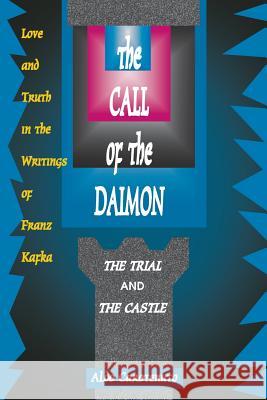The Call of the Daimon: Love and Truth in the Writings of Franz Kafka » książka
The Call of the Daimon: Love and Truth in the Writings of Franz Kafka
ISBN-13: 9780933029835 / Angielski / Miękka / 2013 / 376 str.
The Call of the Daimon: Love and Truth in the Writings of Franz Kafka moves easily between Kafka's life, characters and events in the novels, contemporary poetry, and Aldo Carotenuto's interpretations of critical Jungian perspectives. The primary human event that interests Carotenuto is the call of the daimon: the desire for truth and love that destroys all misconceptions and self-delusions, that demands a constant creative response to life's difficulties, and that ultimately allows the seeker no rest.This is Carotenuto's vision of the driven Kafka, and he follows this theme as it moves from Kafka's life into the created lives of his characters. Carotenuto analyzes the characters as aspects of Kafka and the novels as Kafka's attempt to be true to the call, which is the essence of true art, and ultimately of true healing. -- Midwest Book Review
The Call of the Daimon: Love and Truth in the Writings of Franz Kafka moves easily between Kafka's life, characters and events in the novels, contemporary poetry, and Aldo Carotenuto's interpretations of critical Jungian perspectives. The primary human event that interests Carotenuto is the call of the daimon: the desire for truth and love that destroys all misconceptions and self-delusions, that demands a constant creative response to life's difficulties, and that ultimately allows the seeker no rest. Both at and analysis are responses to a probing need for truth and love. The daimon’s call is the summons to find them, regardless of cost. Kafka made the journey alone for the most part and he recorded his search in his writings. Here, Carotenuto reads two of Kafka’s novels, The Trial and The Castle, from the perspective of Jungian Psychology, and finds, if not love and truth, a creative response to the dilemmas of life.Aldo Carotenuto is a professor of personality theory at the University of Rome and the director of the Review of Analytical Psychoanalysis and the Historical Journal of Dynamic Psychology. His many books include The Difficult Art, Kant’s Dove, and A Secret Symmetry: Sabina Speilrein Between Jung and Freud. He lives and practices in RomeTable of ContentsI. The Parable of the ArrestII. The Alienation of the MarionetteIII. Guilt and QuestioningIV. The Night of the SoulV. The Return to the MotherVI. The Wait in the DarkVII. Entering the LabyrinthVIII. Eros and ViolenceIX. The Compromise with ExistenceXI Salvation in ArtXI. The Pain DeniedXII. From the Metaphor of the Trial to the Metaphor of the CastleXIII. The Call: The Fascination of the DaimonXIV. The Pain of TransformationXV. The Exclusion of the OutsiderXVI. The Utmost ChallengeXVII. The Illness of IdentityXVIII. The Faces of the MysteryXIX. The Other as the Mirror of the SelfXX. The Affliction of QuestioningXXI. The Realm of the WordXXII. A Look at DeathXXIII. Eros UnawareXXIV. The Encounter with the OtherXXV. The Deus AbsconditusXXVI. The Amorous PossessionXXVII. Jacob's StigmaXXVIII. The Mute PassionXXIX. Sexuality and EncounterXXX. The Struggle for LifeXXXI. The Guilty Messiah











